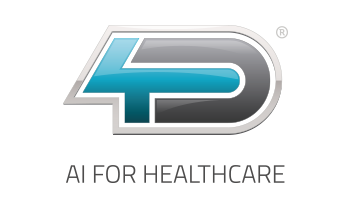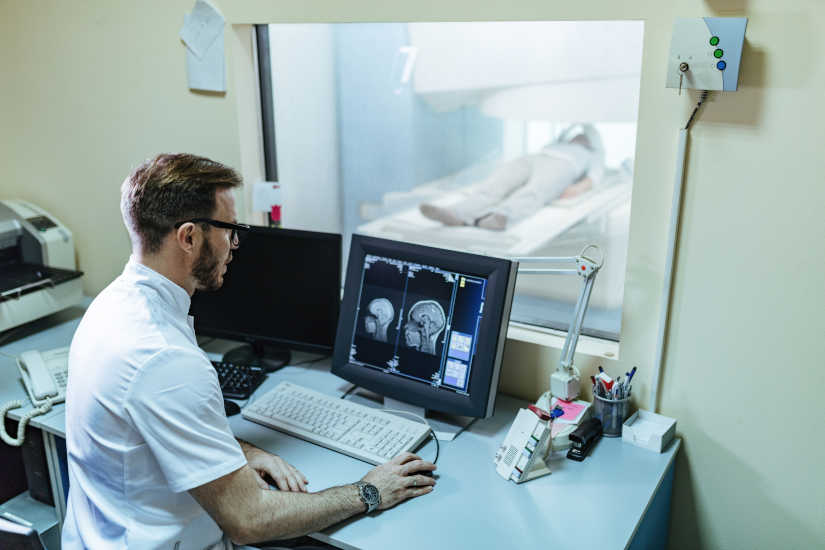Technology is becoming increasingly important when it comes to storing and managing different data and resources. In the field of medicine, we can highlight the RIS management system for diagnostic imaging. This is a type of specialized software used in the radiology area and in other medical fields to manage information and processes related to the services provided by the image diagnosis. In the following article, we analyze how it works, its main features and advantages.
What is the RIS management system for diagnostic imaging?
The RIS management system is responsible for automating the management of medical imaging data and information. It works like a hospital information system (HIS), but the main difference is that it is specifically tailored to radiology departments in clinics, hospitals and healthcare centers.
It is called RIS (Radiology Information System) and represents a key part of the IT infrastructure in radiology departments, clinics and hospitals. A radiodiagnostic software is a tool that includes a multitude of functions in a single centralized platformfrom manage patient data and history, store medical images and create customized reports. Therefore, it stands out as a solution that helps to improve workflows and optimize medical imaging processes.
Main features and functions of the RIS system
How does the RIS system work? We analyze the main features and functionalities it offers:
Patient registration
Firstly, the RIS system is used to register the patients to be attended. For this purpose, the different data to create your medical record: the personal information of contact, the medical history and the insurance information.
Appointment scheduling
Once the patients are registered in the system, they can be scheduling appointments for diagnostic imaging tests. From radiographs, computed tomography or CAT scans, magnetic resonancesetc. The software organizes and prioritizes orders according to urgency, equipment and personnel availabilityoptimizing the management of time and available resources.
Storage and tracking of medical images
Radiologists can attach the results of the images generated after the medical tests directly to the patient's fileThis speeds up the availability of the studies. At the same time, it also allows include data related to medical examinationssuch as reports and diagnostic information.
Patient follow-up and test management
The RIS system makes it possible to perform the follow-up of the patient's treatment and of the examinations carried out through the system. In this way, the complete medical history can be accessed and patient information can be checked for necessary updates during the diagnostic process.
Workflow tracking
Allows you to track each stage of the process, from the initial request to the generation of the final reportThe system ensures efficient and uninterrupted execution. Another aspect to highlight is that improves collaboration between different medical teams who work in patient treatment, such as radiologists, technicians and medical specialists.
Report generation
Radiologists can writing and sharing diagnostic reports based on processed images. The reports are securely stored and made available to physicians and also to authorized patients. The results are generated digitally, but can also be sent by e-mail and fax, as well as exported for printing on paper. Using the RIS system, different statistical reports can be produced, either for specific examinations, individual patients or groups of patients.
Data analysis and statistics
The system produces reports and statistics on workflows, volumes of studies performed and equipment performanceThe results of this study will facilitate administrative decision making and increase the efficiency of diagnostic imaging services.
Data storage and security
All information, including images, reports, and financial records, is stored in secure databases. This helps to ensure the compliance with medical and privacy regulationssuch as GDPR in Europe or HIPAA in the United States.
Billing and administration
Another of its functions is that automates the creation of invoices related to exams performed. By integrating payment and insurance records, financial management processes can be simplified.
What are the advantages of RIS for diagnostic imaging?
The RIS management system offers numerous advantages, mainly in terms of efficiency, accuracy and quality of service in the field of radiology. We explain its main benefits in the medical field:
Workflow optimization
Allows you to manage all stages of medical diagnosisfrom the request to the delivery of reports. This helps to improve organization and reduce delays that may arise. At the same time, automated appointment scheduling ensures that the efficient use of time and resources.
2. Accuracy and security of data
Reduces the occurrence of errors by centralizing patient information, as test results are located on a single platform. On the other hand, by complying with data security regulations such as HIPAA and GDPR, the medical information included in the RIS system is kept confidential.The patient's data is processed correctly.
3. Quick access to information
Physicians, radiologists and technicians have immediate access to patient records and studiesThis streamlines clinical decision making. And not only that, the system usually includes a integration with cloud-based solutions. In this way, the medical team can remotely access information from anywhere, anytime.
4. Integration with other medical systems
It works in conjunction with other medical systems: both PACS and HIS. On the one hand, the PACS system is used to manage the long-term storage of both images and patient information, and HIS systems are hospital information software used in the management of clinics and hospitals. Therefore, the integration of these systems into the RIS system makes it possible to create a complete healthcare ecosystem.
5. Improved patient care
Offers a agile, comprehensive and seamless patient care experience. Among its advantages is the reduction of waiting times in treatment planning and diagnosis, the results are available more quickly and reduce the administrative burden to be carried out by professionals and patients.
6. Cost reduction
In addition to optimizing the work process, helps reduce costs and increase profitability. It eliminates the need to create paper documentation and reduces administrative errors, thus optimizing billing processes and scheduling of medical services.
Conclusion
The RIS management system is an essential tool for optimizing administrative and clinical processes in radiology and other areas of diagnostic imaging. The use of radiodiagnostic software helps to increase efficiency, service quality and patient care.


